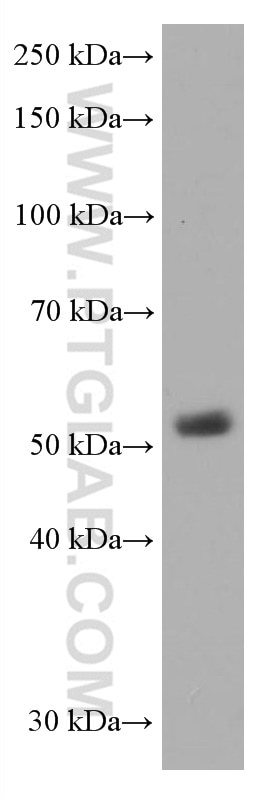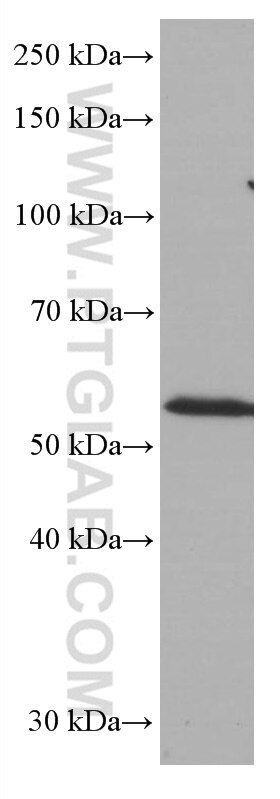Tested Applications
| Positive WB detected in | pig thymus tissue, Jurkat cells |
Recommended dilution
| Application | Dilution |
|---|---|
| Western Blot (WB) | WB : 1:1000-1:4000 |
| It is recommended that this reagent should be titrated in each testing system to obtain optimal results. | |
| Sample-dependent, Check data in validation data gallery. | |
Product Information
60173-3-Ig targets CD1A in WB, ELISA applications and shows reactivity with Human, Pig samples.
| Tested Reactivity | Human, Pig |
| Host / Isotype | Mouse / IgG1 |
| Class | Monoclonal |
| Type | Antibody |
| Immunogen | CD1A fusion protein Ag11304 Predict reactive species |
| Full Name | CD1a molecule |
| Calculated Molecular Weight | 327 aa, 37 kDa |
| Observed Molecular Weight | 50-55 kDa |
| GenBank Accession Number | BC031645 |
| Gene Symbol | CD1A |
| Gene ID (NCBI) | 909 |
| RRID | AB_2881353 |
| Conjugate | Unconjugated |
| Form | Liquid |
| Purification Method | Protein G purification |
| UNIPROT ID | P06126 |
| Storage Buffer | PBS with 0.02% sodium azide and 50% glycerol, pH 7.3. |
| Storage Conditions | Store at -20°C. Stable for one year after shipment. Aliquoting is unnecessary for -20oC storage. 20ul sizes contain 0.1% BSA. |
Background Information
CD1a is an antigen-presenting protein that binds self and non-self lipid and glycolipid antigens and presents them to T-cell receptors on natural killer T-cells. During protein synthesis and maturation, CD1 family members bind endogenous lipids that are replaced by lipid or glycolipid antigens when the proteins are internalized and pass through endosomes, before trafficking back to the cell surface.
Protocols
| Product Specific Protocols | |
|---|---|
| WB protocol for CD1A antibody 60173-3-Ig | Download protocol |
| FC protocol for CD1A antibody 60173-3-Ig | Download protocol |
| Standard Protocols | |
|---|---|
| Click here to view our Standard Protocols |





